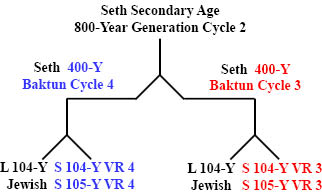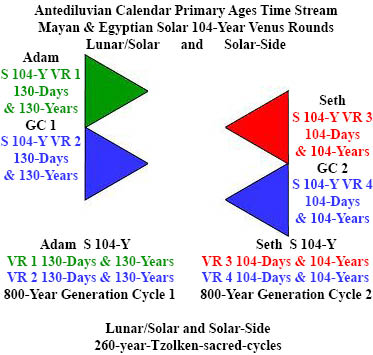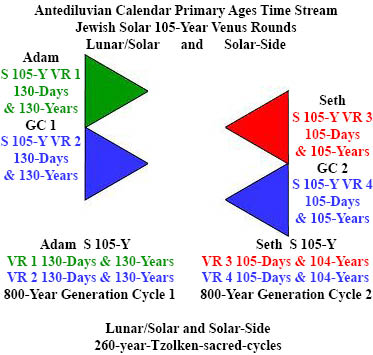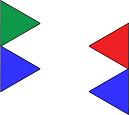
260-year-Tzolken-sacred-cycles Text
Color and Meanings:
Black: general description with name and number Ex. 800-Year Generation Cycle 1
to 7
Lunar/Solar column Adam 800-Year
Generation Cycle 1
Adam 400-Year Baktun
Cycle 1 is active.Adam 400-Year Baktun Cycle 2 is inactive.
Solar-Side column Seth
807-Year Generation Cycle 2
Seth 400-Year Baktun
Cycle 3 is active.Seth 400-Year Baktun Cycle 4 is inactive.
Adam, Enos and Mahalaleel form the
primary age Lunar/Solar 260-year-Tzolken-sacred-cycle.
Seth and Cainan form the primary age Solar-Side
260-year-Tzolken-sacred-cycle.
Venus Round (VR) Text Color and
Meanings:
Jewish Venus Rounds (VR) are 105-Years
Black L notes Lunar-side equal to S for Solar-side
Green S or Red S active first 400-Year Baktun Cycle
Blue S inactive second 400-Year Baktun Cycle

Mayan and Egyptian
Adam 400-Year Baktun Cycle 1 generates active
Adam Solar 104-Year Venus Round 1
Adam S 104-Y
VR 1 is active
Adam
400-Year Baktun Cycle 2 generates
inactiveAdam Solar 104-Year Venus Round 2
Adam S
104-Y VR 2
is inactive
Seth
400-Year Baktun Cycle
3 generates
activeSeth Solar 104-year Venus Round 3
Seth
S 104-Y VR 3 is
active
Seth
400-Year
Baktun Cycle 4 generates inactiveSeth Solar 104-year Venus Round 4
Seth
S 104-Y VR 4
is inactive
Jewish
Adam 400-Year Baktun Cycle 1 generates active
Adam Solar 105-Year Venus Round 1
Adam S 105-Y
VR 1 is active
Adam
400-Year
Baktun Cycle 2 generates
inactiveAdam Solar 105-Year Venus Round 2
Adam S 105-Y VR 2 is inactive
Replace Mayan & Egyptian Seth S 104-Y VR 3above with Jewish Seth S 105-Y VR 3


